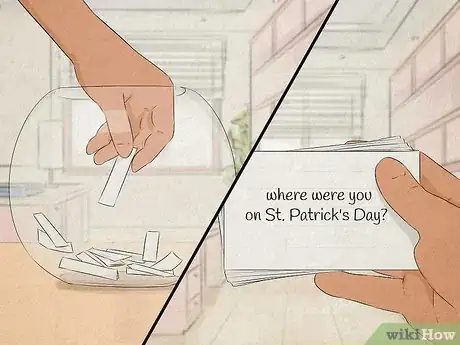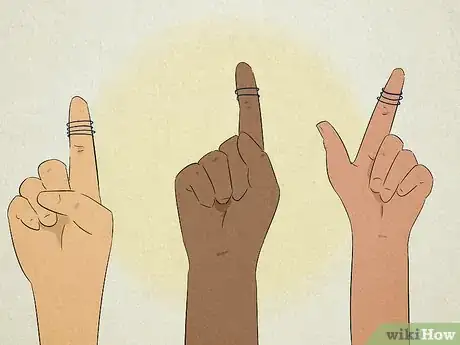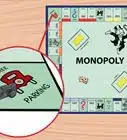This article was co-authored by Kathy Slattengren, M.Ed. and by wikiHow staff writer, Janice Tieperman. Kathy Slattengren is a Parent Educator and Coach and the Founder of Priceless Parenting. With over two decades of experience, Kathy specializes in helping parents build strong, loving relationships with their children. She has helped thousands of parents around the world through Priceless Parenting's online classes, presentations, coaching, and books. Kathy holds a Bachelor's degree in Computer Science and Psychology from The University of Minnesota and a Masters degree in Education and Instructional Design from The University of Washington. Kathy is a member of the National Parenting Education Network, the US Alliance to End the Hitting of Children, the International Society for Technology in Education, and a founding member of Parent Learning Link. Priceless Parenting has been featured on ABC News, Komo News, King 5 News, National PTA, Parent Map, and Inspire Me Today.
This article has been viewed 31,054 times.
Whether you run a classroom or workspace, teaching or working with new people can be a little awkward at first. Don’t worry. There are plenty of fun, easy ways to bond with your new group. We’ve outlined a few simple games that can help you break the ice.
Steps
Group Bingo
-
Mingle with a get-to-know-you game of bingo. Create a bingo board with different traits or attributes listed in each square, like "Born in January" or "Has a pet cat," and give each person a copy of it. Then, have everyone chat with each other and try to find people that have the traits listed on their bingo cards. When a player finds someone who has one of the included traits, they write that player's name down in that square. Whoever gets bingo first wins!
- To encourage more conversations, only use a person’s name once on your bingo card.
- Prompts that you could include on the premade bingo card might be “has lived in another country,” “born in January,” “has a pet cat,” or “plays soccer.”
Two Truths and One Lie
-
Learn fun facts about other people in the group. Invite each person in your group to share 2 true facts about themselves, as well as 1 lie. The rest of the group will try to guess which facts were true, and which one wasn’t. No one has to share any big secrets or confessions—simple facts about your life are a fun, educational way to break the ice with your peers.
- Statements like, “I’ve never had Thai food before,” “I have a pet iguana,” or “I’ve never left the country” are fun facts you could share during the game.
Jenga Questions
-
Transform a game of Jenga into a fun icebreaker. Write a get-to-know-you question on each of the wooden blocks. Then, set up your Jenga tower as normal. Invite each member of your group to carefully remove a block and answer the question that’s written on it. Continue cycling through your group members until the tower falls down.[1] X Research source
- Questions like “What’s the best present you ever got?” “What’s your favorite time of year?” and “How do you like to spend your alone time?” are all great icebreaker questions.
- “What are 2 things you’re good at?” “What’s something you can’t live without?” or “What are you looking forward to?” are other excellent questions.
I Have Never
-
Compare your life experiences with other people’s. Sit in a circle with the other group members. Hand out 10 pieces of candy to each player. Then, invite each player to share a “I have never” statement. If you’ve done the activity that the person shared, give them 1 of your candy pieces. Continue around the circle for as long as you’d like.[2] X Research source
- You might say “I have never gotten stung by a bee,” “I have never seen the Pacific ocean,” or “I have never pulled an all-nighter.”
Where Were You
-
Take a trip to the past with your fellow group members. Write different years on multiple slips of paper, and drop them in a jar. Ask each person to pull a piece of paper out of the jar. Then, encourage each group member to share where they were and what they were doing during the year listed on their paper slip.[3] X Research source
- Write down years that everyone in the group can relate and connect to.
String Game
-
Share fun facts based on a length of string. Cut out several different lengths of string, and let the group members each pick one. Then, invite each person to wrap the string around their finger. Each group member must volunteer a fun fact about themselves for every loop that the single piece of string creates around their finger.[4] X Research source
- You can play a sillier version of this icebreaker by using toilet paper instead of string. People grab as much toilet paper as they normally would use from a roll. Then, each person shares a fun fact about themselves for every square they pulled off.
Deserted Island
-
This game shows you the personal values of other group members. Divide everyone into small groups. Then, tell each group to pick 5 items that they’d bring with them to a desert island. Invite each group to explain their choices to the rest of the group.[5] X Research source
- Each group has to agree on 5 items, instead of each player picking 5 items.
Shoe Icebreaker
-
Learn about the rest of your group through their shoes. Instruct everyone to stand in a circle and take off their shoes. Then, invite 1 person to grab a pair of random shoes and make a positive assumption about the owner based on their footwear. The owner will then introduce themselves and continue the game by grabbing a new pair of shoes.[6] X Research source
- You might say, “The owner of these shoes has a great sense of fashion” or “The person who owns these shoes must not like being cold.”
A Great Wind Blows
-
Get to know your group in this fun variation of musical chairs. Invite everyone to sit in a circle of chairs. Make a general statement using the phrase “A great wind blows for everyone who…” Invite anyone who identifies with the statement to stand up and seat themselves in a different chair. For every round that someone stands up, remove a chair from the circle—if someone can’t find a chair, then they’re out of the game.[7] X Research source
- You might say, “A great wind blows for everyone who likes spicy food” or “A great wind blows for everyone who speaks another language.”
Common Ground
-
Figure out what you have in common with others. Break into even groups of about 3-6 people. In these groups, take 3 minutes to write a list of different things you all have in common. When the timer runs out, compare your lists with the other groups and see who had the longest one.[8] X Research source
- The similarities can’t involve body parts, like “We all have 2 eyes” or “We all have 10 fingers.”
You Might Also Like


 The Cutest Would You Rather Questions for Crushes & Couples
The Cutest Would You Rather Questions for Crushes & Couples





 Strip Twister Guidelines: How to Play a Classic Game in a Fun & Sexy Way
Strip Twister Guidelines: How to Play a Classic Game in a Fun & Sexy Way



References
- ↑ https://busyteacher.org/23163-shy-students-6-fun-simple-games.html
- ↑ https://temp.lionsclubs.org/EN/pdfs/icebreakers.pdf
- ↑ https://www.maryville.edu/cse/wp-content/uploads/sites/62/2016/09/Icebreakers-Team-Builders.pdf
- ↑ https://www.maryville.edu/cse/wp-content/uploads/sites/62/2016/09/Icebreakers-Team-Builders.pdf
- ↑ https://temp.lionsclubs.org/EN/pdfs/icebreakers.pdf
- ↑ https://www.maryville.edu/cse/wp-content/uploads/sites/62/2016/09/Icebreakers-Team-Builders.pdf
- ↑ https://www.gpb.org/blogs/education-matters/2016/07/21/20-great-icebreakers-for-the-classroom
- ↑ http://www.serviceandinclusion.org/conf/HSHT-Team-Building-Ice-Breaker-Manual-2008-09.pdf
About This Article
























































